Can a Ski Area and Conservation Co-Exist?
Historically, conservationists vilify ski areas and often with just cause. The broad swaths cleared for runs fracture the eco system and resident wildlife hesitate traversing the new open areas. The recent emphasis on year-round mountain activities further displaces the wildlife. The increased human engagement brought in by the development forces the wildlife out of the area.
A new ethos may be coming to the ski industry. The proposed Zincton ski area between New Denver and Kaslo in the British Columbia Purcell’s suggests a radical new way of balancing the needs of a ski area with the overall health of the environment. The ski area plans to leave over 80% of their tenure essentially untouched and a massive mining toxic waste site with over 70 mines will be cleaned up by dedicated ski area revenues. And there’s more. . .
Recently, Zincton’s Open House presented a Formal Proposal to the Province and the public. Close to 300 people signed in on Zoom. The initial Expression of Interest (EOI) in May of 2020 generated over 3000 comments. The Formal Proposal proposed innovative solutions to key issues generated by the initial EOI. The two primary issues arising were maintaining wildlife connectivity and the toxic waste from over 70 mine sites in the Retallack Mining District covered by the proposed tenure.
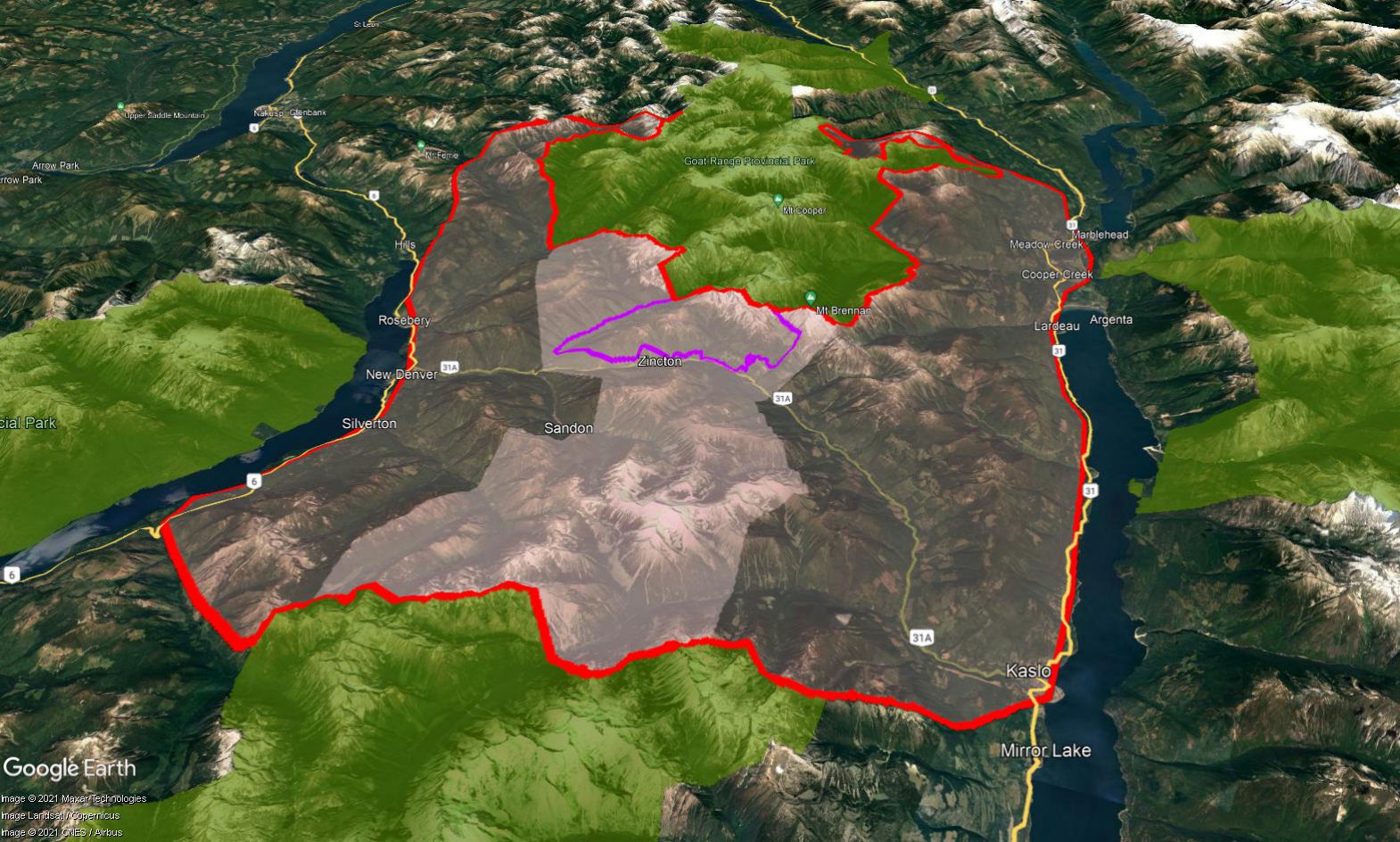
Skiing is a winter sport. With the Zincton terrain’s huge snow depths, 60 feet at 6000 feet, in the winter most of the animals either hibernate or move to lower elevations. The issue becomes summer, when the ungulates, other mammals, and grizzly bears move freely in the area migrating through the north/south corridor of the Purcell’s between the Slocan/Arrow Lake drainage and the Kootenay Lake drainage. The lower reach of Kokanee Park up to Rogers Pass is a key area in the Yellowstone to Yukon Corridor many environmentalists seek to keep open. Zincton agreed, and created a 10,000 acre Summer Wildlife Corridor Protection zone. While only about 5% of the complete natural corridor, it is a start. Zincton is committed to working with other tenure holders in protecting the balance of this important corridor. At this time, there is little activity in the corridor and Zincton plans on keeping it that way.
Zincton proposes no commercial huckleberry harvesting or commercial guiding in the summer in the area. Leave it alone. In addition, the current mountain bike trails in the Alpine will be de-commissioned. The mountain biking will be moved to the lower elevations and out of the migration corridor, primarily to promote through-biking on the old wagon roads and railroad right-of-ways connecting Kaslo with New Denver.
There is currently a small contingent of locals who hike and observe wildlife within the proposed tenure. A small hardy contingent. The land is a mix of huckleberries, slide alders and cliffs. Better for bears than people. Nothing will change to limit historical use. Their activities will not be constrained in any way. Access, winter and summer, will continue to be open and with no charge.
The toxic waste is a greater problem. During seventy years of mining, miners randomly discarded tens of million tons of underground waste rock on the surface. There was no consideration of toxic runoff or potential leaching into the Kaslo River. The Whitewater Mine alone has over 20 miles of underground tunnels. The area is riddled with another 70 smaller mining claims, each with its own diggings and waste pile. Arsenic, lead, and other heavy metals are picked up by the water. Some of the smaller creeks contributing to the Kaslo River carry several hundred times the maximum allowable in heavy metals. The mammals in the area drink this toxic mix during their annual migrations. The toxic water runs into Kaslo River and into Kootenay Lake damaging to the once vibrant Gerrard trout fishery. The Kaslo River itself is now considered toxic and cannot be used for drinking or for bathing.
Any proposed solution needs to be comprehensive, funded, and accountable. “Doing nothing” is not a responsible, mature proposal in these times. As a community, we must start to fix the past mistakes.
Zincton joined 1% for the Planet, one of the world’s leading environmental organizations. By pledging 1% of all ski revenues, the fund is projected to generate more than $13.4 million during the life of the tenure. To direct the study of the contaminated waste and to direct the remediation, Zincton formed the Zincton Institute, an independent, non-profit BC Society.
The Zincton Institute will take Cascade Environmental Resource’s initial independent biological assessment of the tenure and initiate a long-term academic study with post-secondary students and faculty to measure the environmental changes in the tenure over the coming years. In the first couple of years, the study will complete an evaluation of the toxic waste. How is it affecting the tenure and the river? From that, a comprehensive mitigation plan will be developed.
Zincton Institute with their 1% for the Planet partners will start the mitigation of the 125-year old waste piles and begin cleaning up the Kaslo River. At the same time, they will be keeping track of any changes within the tenure from the initial environmental assessment . The Zincton Institute will create an ongoing, open source, detailed academic record of the tenure. Another ski area first.
The Zincton Institute will also develop cultural programs…music, performance, writing and painting workshops—to foster the arts in the region.
And what about the skiing?
The ski lifts will be located in the lower southwest corner. The balance of the terrain will be reserved for non-mechanized, human powered activities—ski touring, split-boarding and snowshoeing. The lift served area will be roughly 20% of the tenure, covering only 2500 acres, with six lifts and a little over 4,000 feet of vertical. In the balance, about 80%, you’ll work for your turns. In that 80%, the Summer Wildlife Migration Protection Corridor, the terrain will remain as is today, essentially undeveloped.
In the Lift-served area, there will be gladding , but very little traditional ski run clearing. Two collector tracks will facilitate returning to the lifts. Looking at the mountains, the forest will remain visually intact. The terrain will be a comfortable mix of beginner, intermediate and expert runs, with more expert terrain than normally found in traditional ski areas.
In another first, Zincton will not need to buy energy credits, but be ClimateNeutral from the first day. Zincton will be powered by the Silversmith Power in nearby Sandon, only 7kms away. In 1897, Nikola Tesla moved his lab from New York to Christina Lake, BC for three months to oversee the installation of the first four modern generating systems operating with alternating three-phase current at 60MHz. A generating station was installed at Christina Lake. Two more installed to power the Red Mine in Rossland. The last generator was installed in Sandon, powering the compressed air for the Slocan Star mine and the rollicking community of 8,000 miners. Today, the Sandon generating station is the only of the four Nikola Tesla installed generators still running. The plant produces enough run-of-the-river power to run the Zincton lifts and meet the needs of the Zincton Village. Silversmith Power was ‘certified green’ in 1999 by the federal government.
From day one, Zincton will be Climate Neutral. The first ski area in North America to be carbon-zero without buying carbon credits.
Zincton is taking a chance in combining a conservation ethic with a small lift foot print and a large touring acreage.
The premise that conservation and open terrain carries as strong an attraction as riding the lifts.
The idea that a ski area can actually fund and regenerate severely damaged land.
The idea that the needs of resident migrating mammals can be met while recreation can be carried on without disturbing them.
These are all new ideas. Ideas that break the current mold in developing ski areas.
In a very real way, Zincton carries forward the intellectual style of Nikola Tesla. Look at a problem. Break the established mode and create a new and innovative path forward.


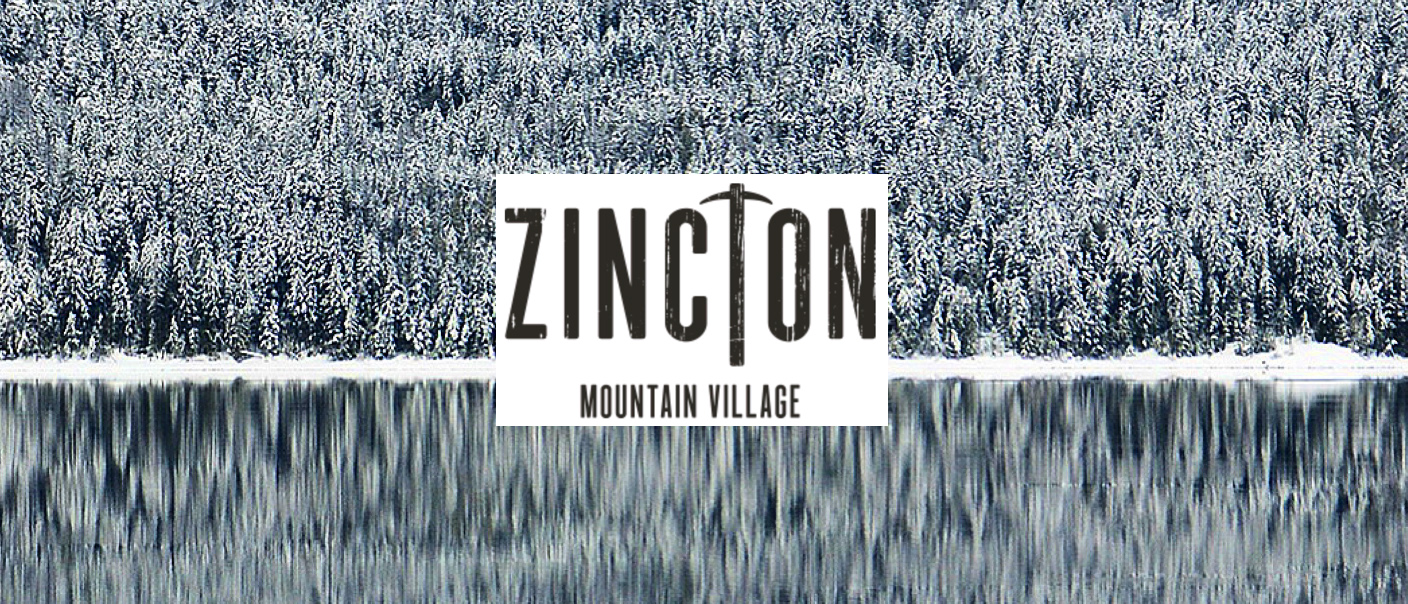
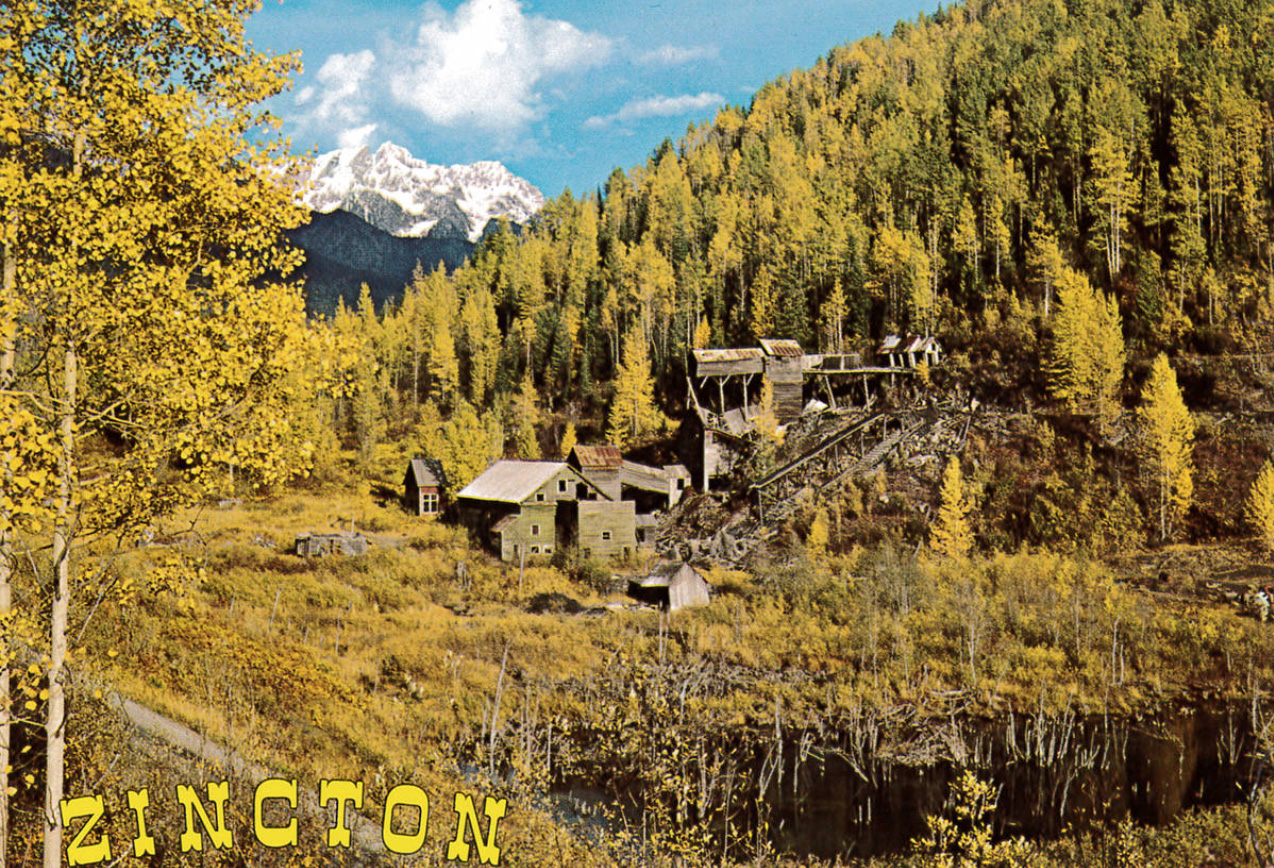
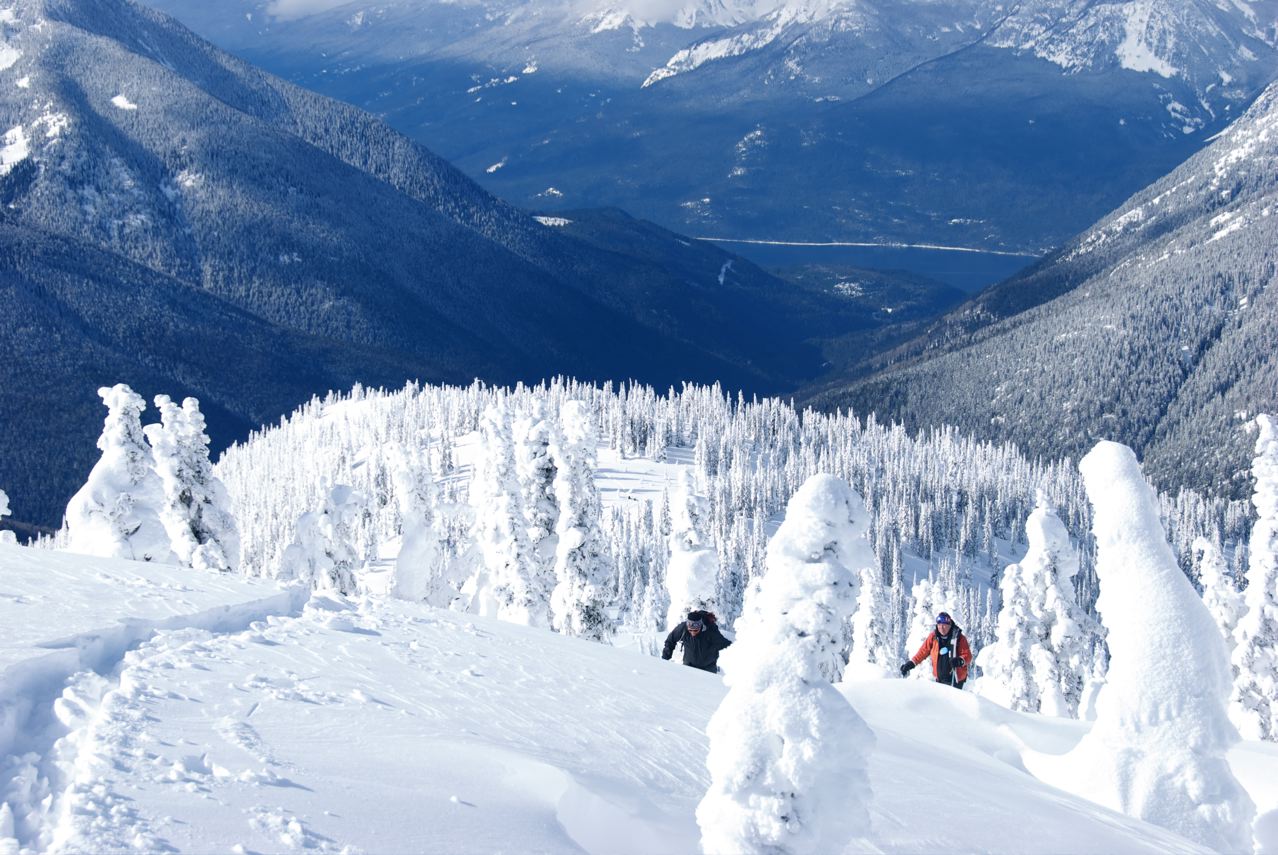

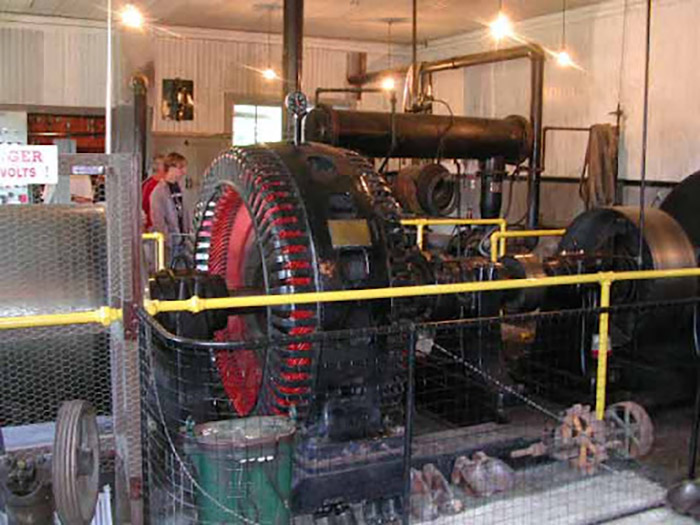








Comments